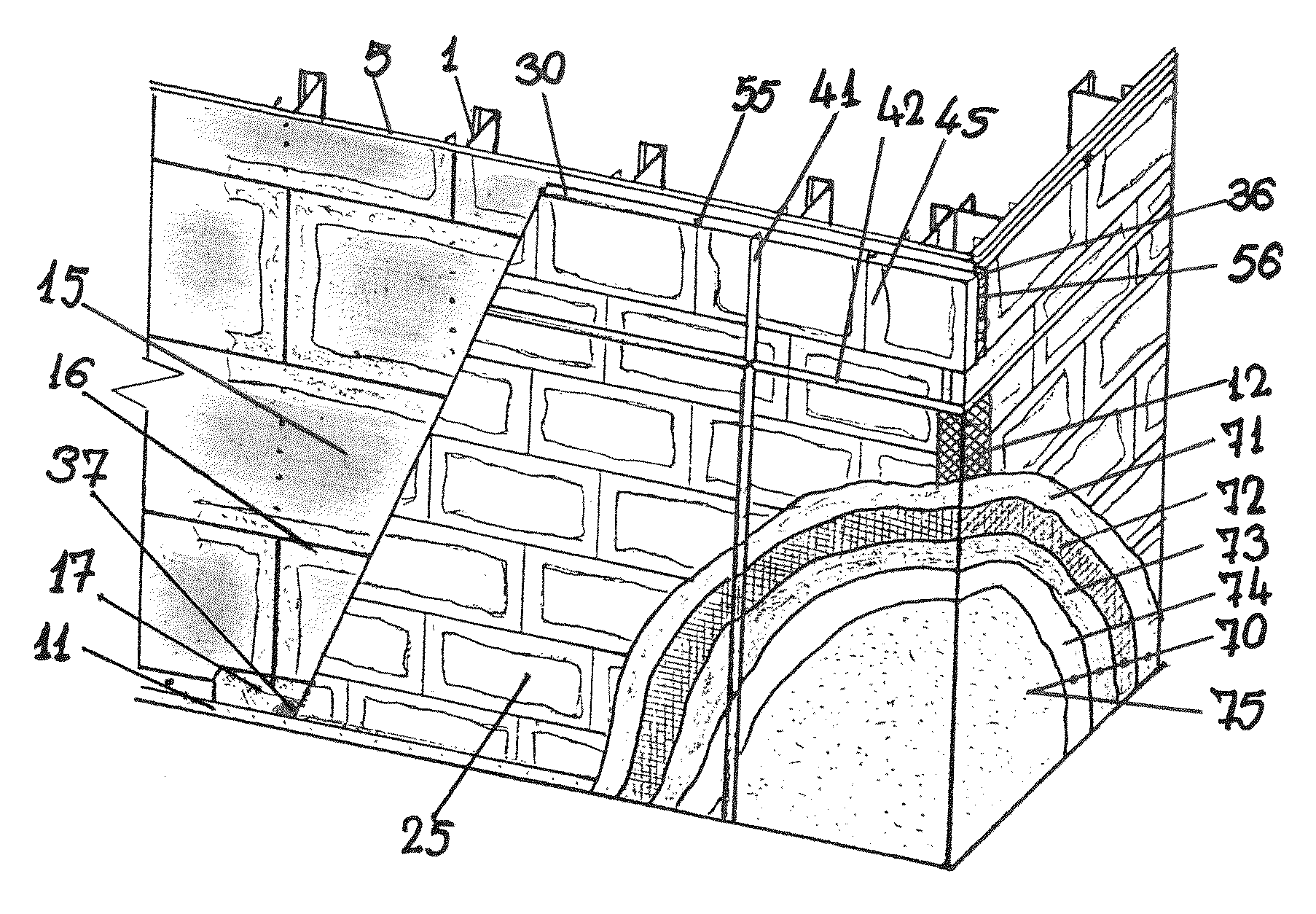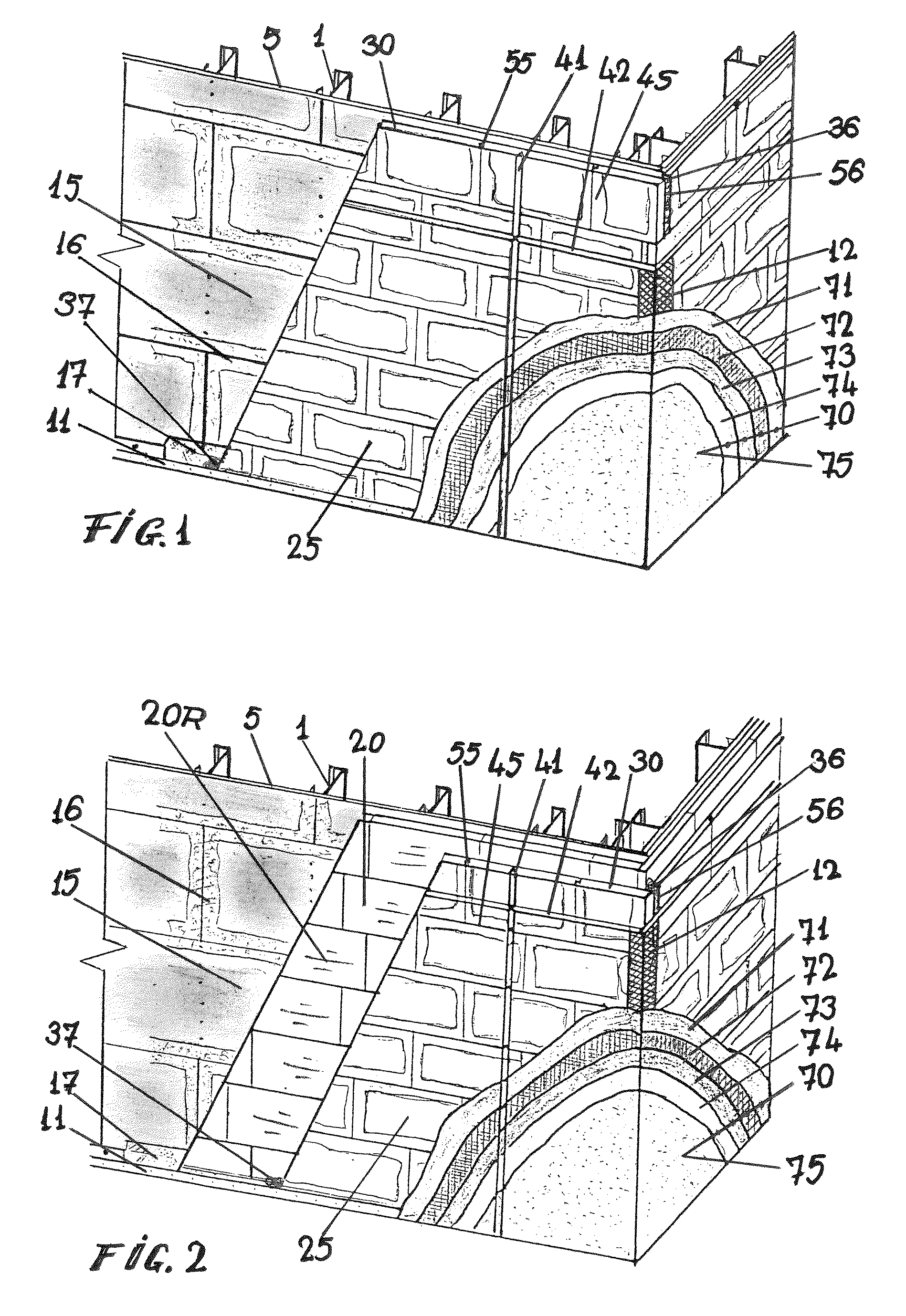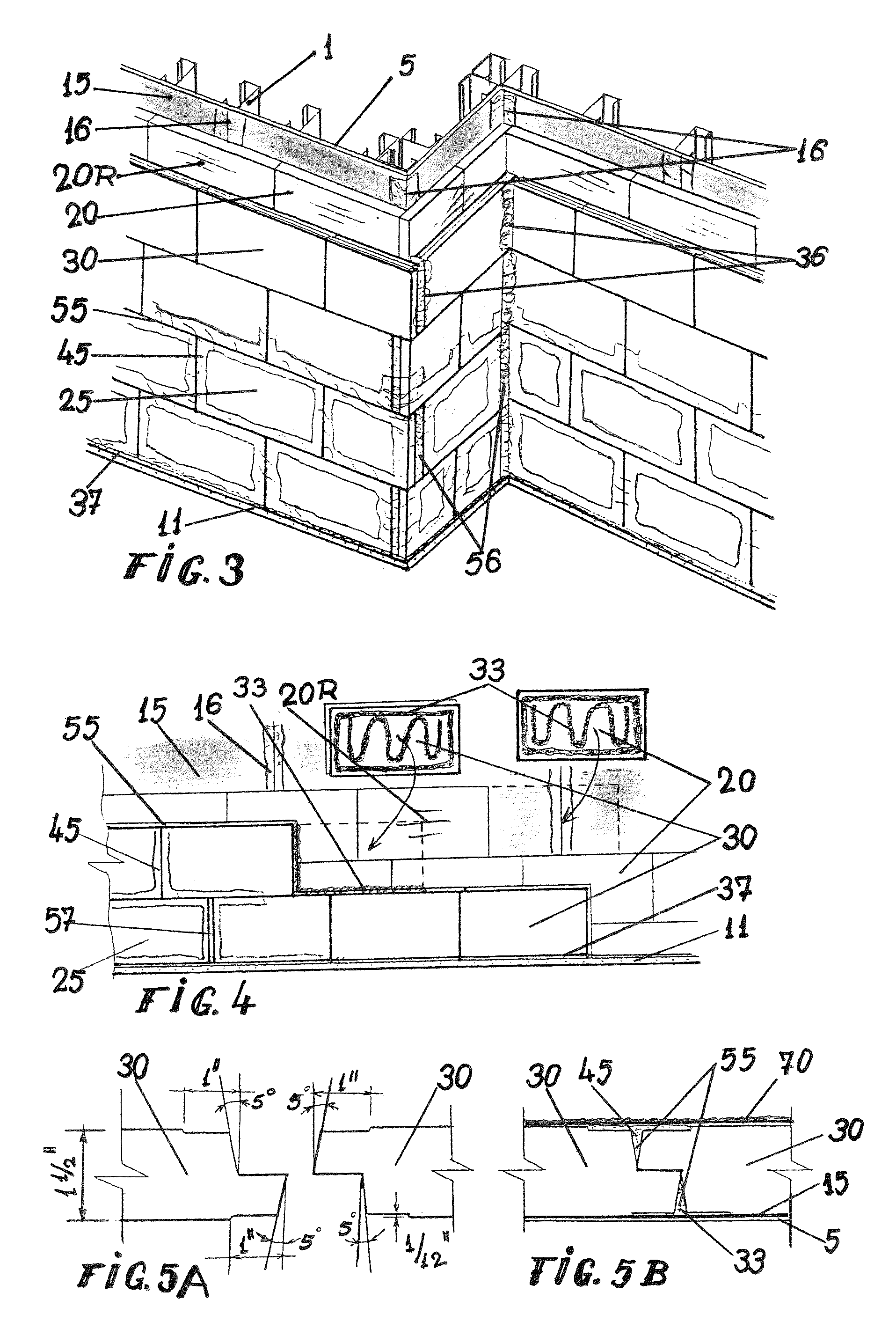NP-EIFS non-permissive exterior insulation and finish systems concept technology and details
a technology of exterior wall covering and non-permissive, applied in the direction of heat insulation, snow traps, building repairs, etc., can solve the problems of water accumulation serious and vexing problems associated with eifs construction, and enter behind the exterior wall covering
- Summary
- Abstract
- Description
- Claims
- Application Information
AI Technical Summary
Benefits of technology
Problems solved by technology
Method used
Image
Examples
Embodiment Construction
[0075]The present invention provides an impermeable to water and non-permissive to vapors exterior insulation and finish system, generically called NP-EIFS. Unlike exterior insulation and finish systems known in the prior art, the EIFS of the present invention provides a double layer of water and moisture protection, one applied to the substrate 5, a liquid membrane 15, to be moisture barrier for inside vapors, and an exterior weather and vapor barrier 25, which is created with extruded polystyrene, closed cell foam, insulation boards (XPS) 30, special assembled 55 (FIGS. 5A-5B) and sealed 45, to create a non-permissive insulation envelope of the enclosure.
[0076]To ensure the success of this new system and concept, it is necessary to analyze the materials involved to create these systems, according to the invention.
[0077]The substrate shall be engineered to withstand applicable design loads and wind loads, and free of foreign materials such as oil, dust, dirt, form release agents, p...
PUM
| Property | Measurement | Unit |
|---|---|---|
| RH | aaaaa | aaaaa |
| Temperature | aaaaa | aaaaa |
| Temperature | aaaaa | aaaaa |
Abstract
Description
Claims
Application Information
 Login to View More
Login to View More - R&D
- Intellectual Property
- Life Sciences
- Materials
- Tech Scout
- Unparalleled Data Quality
- Higher Quality Content
- 60% Fewer Hallucinations
Browse by: Latest US Patents, China's latest patents, Technical Efficacy Thesaurus, Application Domain, Technology Topic, Popular Technical Reports.
© 2025 PatSnap. All rights reserved.Legal|Privacy policy|Modern Slavery Act Transparency Statement|Sitemap|About US| Contact US: help@patsnap.com



